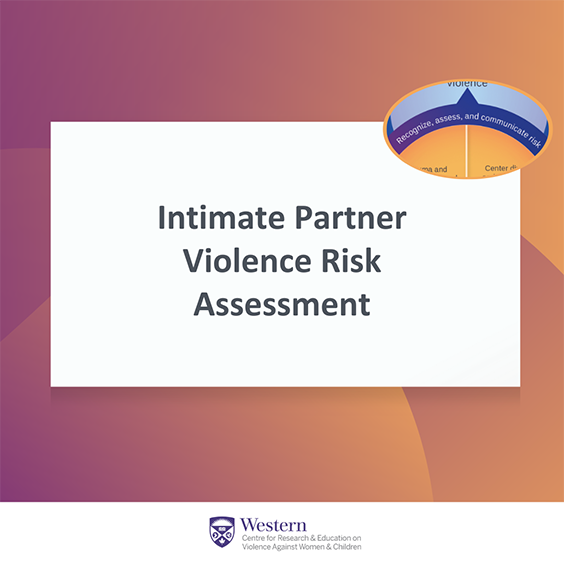Lecture
5
Start Date
26 January 2024
Language
English (en)
Course Overview
Understanding factors which contribute to the risk of intimate partner
violence (IPV) is essential to keeping survivors and their children safer. In
this interactive course you will learn the difference between screening for
intimate partner violence and risk assessment; why using validated
screening and risk assessment tools is important; the types and fundamental
elements of good risk assessment and key steps in risk management; and how
intersecting life circumstances influence risk. We will discuss gender
differences between factors which predict risk for IPV and what we know about
risk for children living with IPV. You will be introduced to three risk
assessment tools––the Danger Assessment, ODARA, and the B-Safer
and will apply your learning using two interactive case studies. Participants
will be asked to complete a short interactive online training program on
recognizing and responding to intimate partner violence risk factors and
warning signs prior to the course to set the foundation for learning.
Learning Outcomes
Upon successful completion of this
course, the participant will be able to
- Describe the difference between screening and
risk assessment;
- Identify key static and dynamic factors
which contribute to risk;
- Identify strategies to manage risk;
- Apply this learning to case studies to analyze
and discuss static and dynamic risk factors, and create a risk management
strategy, which include identifying important resources required.
More about the course
- Dates:
- Section 1: January 26th (10:00 AM – 1:00 PM ET)
- Section 2: February 2nd (10:00 AM – 1:00 PM ET)
- Category: Virtual (via
Zoom)
- Assignment: Practice material will be given between the two dates
- Certification: available upon completion
Enrollment
Fees: $50 CAD $200 CAD (Cost
is subsidized by CREVAWC for this program)
How do I enroll?
Course is full.
Enrolment options

Understanding factors which contribute to the risk of intimate partner
violence (IPV) is essential to keeping survivors and their children safer. In
this interactive course you will learn the difference between screening for
intimate partner violence and risk assessment; why using validated
screening and risk assessment tools is important; the types and fundamental
elements of good risk assessment and key steps in risk management; and how
intersecting life circumstances influence risk. We will discuss gender
differences between factors which predict risk for IPV and what we know about
risk for children living with IPV. You will be introduced to three risk
assessment tools––the Danger Assessment, ODARA, and the B-Safer
and will apply your learning using two interactive case studies. Participants
will be asked to complete a short interactive online training program on
recognizing and responding to intimate partner violence risk factors and
warning signs prior to the course to set the foundation for learning.
Learning Outcomes
Upon successful completion of this
course, the participant will be able to
- Describe the difference between screening and
risk assessment;
- Identify key static and dynamic factors
which contribute to risk;
- Identify strategies to manage risk;
- Apply this learning to case studies to analyze
and discuss static and dynamic risk factors, and create a risk management
strategy, which include identifying important resources required.
More about the course
- Dates:
- Section 1: January 26th (10:00 AM – 1:00 PM ET)
- Section 2: February 2nd (10:00 AM – 1:00 PM ET)
- Category: Virtual (via
Zoom)
- Assignment: Practice material will be given between the two dates
- Certification: available upon completion
Enrollment
Fees: $50 CAD $200 CAD (Cost
is subsidized by CREVAWC for this program)
How do I enroll?
Course is full.
Guests cannot access this course. Please log in.

